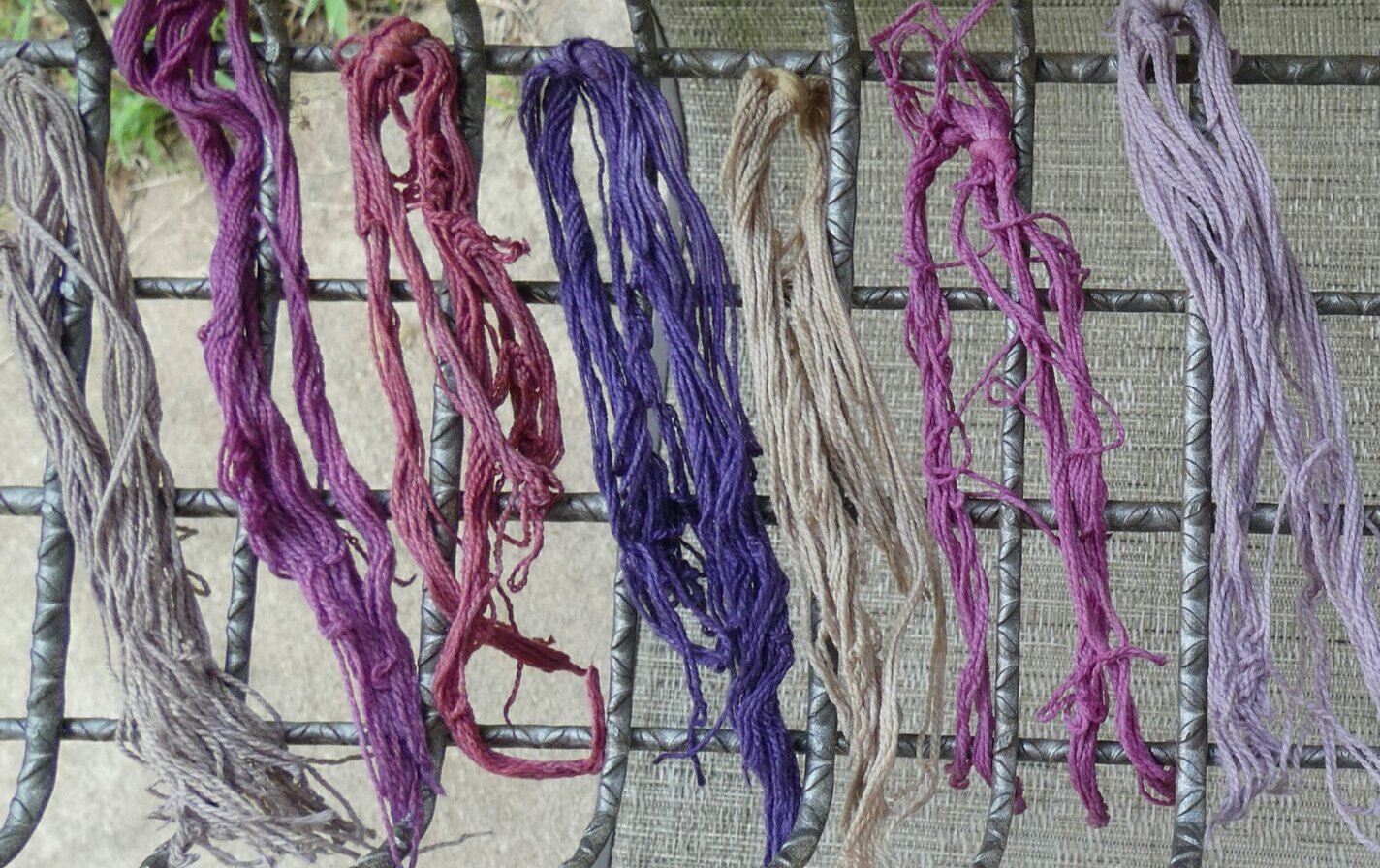Natural Dyeing-Day 4
Day 4 is all about black walnut, logwood, and more overdyeing.
First, a follow-up on yesterday’s dyeing. On the right is the now dry quebracho sample. On the left are the madder root sample and the weld and cochineal overdyed with the madder. In real life, these colors are more vibrant and lean a little more to orange. Gorgeous colors!
The walnuts have been marinating for three days, and it’s finally their time to shine. I used a colander to drain off the dye liquid from the walnut hulls and pieces. Black Walnut is a tannin, so I used one of the 50-gram skeins not premordanted with Gallo tannin. I have found a wide range of amounts of fresh/frozen whole walnuts to use, from 50-500% (and even up to 1000%). My two walnuts weighed 185 grams, making it 370% WOF (weight of fiber).
I have dyed with black walnut before. In addition to the amount of dye material, the duration of time in the dye pot really affects the depth of shade.
I brought the temperature in the dye pot up to 180 and held it there. This is the yarn at one hour.
At the one-hour mark, I took out the samples I was overdyeing. Far left is overdyed madder. Next is overdyed cochineal. The two pieces on the right look pretty much the same to me. One is overdyed weld, and the other an undyed thrum with just this dip in the walnut bath. Maybe there will be more of a color difference in these two when they dry.
For the remaining yarn in the bath, I continued the temperature at 180F for another hour. This is the color at two hours. I’ve removed the pot from the stove, and the fibers will sit in the dye bath until tomorrow. I’m hoping for a dark chocolate brown.
I also dyed with logwood which produces this fantastic purple. Logwood comes from the wood of the tree Haematoxylon campechianum, which grows in the Yucatan region of Mexico.
Like cochineal, logwood was highly valued by the European aristocracy. If dyed deep enough, it can approach black making it the primary source of dyed black cloth before chemical dyes were developed.
In addition to its use as a natural dye, logwood is used as a laboratory stain.
Unlike the other dyes I used this week, logwood requires just a tiny amount and far less time to produce fabulous colors. The above color is after 30 minutes in a 180 degree 1% dye bath.
I did some overdyeing and second dyeing with the exhaust bath. Above from left to right:
Weld overdyed with logwood (5 minutes in the bath) - more grey-green in real life
Cochineal overdyed with logwood (5 minutes)
Madder overdyed with logwood (5 minutes)
Logwood at 1% WOF (weight of fiber) (30 minutes)
Weld overdyed with logwood exhaust bath (5 minutes) - again more grey green
Cochineal overdyed with logwood exhaust bath (5 minutes)
Undyed thrum in logwood exhaust bath (5 minutes)
Tomorrow is the last dye day. I’ll let everything have a good dry, and I’ll be back on Monday with all the finished skeins!
Debby













